Guest Feature by John Wynn-Jones: the pursuit of beauty
 Dr John Wynn-Jones is well known in WONCA circles and immediate past chair of the WONCA Working Party on Rural Practice. During the COVID-19 crisis he has been writing a daily 'Rural Miscellany' email with poems and resource ideas to help and divert us in this difficult time. After the popularity of his guest columns in May (on "The Four Seasons") and June (on "Two paintings and two doctors"), he agreed to entertain us again this month on "the pursuit of beauty"
Dr John Wynn-Jones is well known in WONCA circles and immediate past chair of the WONCA Working Party on Rural Practice. During the COVID-19 crisis he has been writing a daily 'Rural Miscellany' email with poems and resource ideas to help and divert us in this difficult time. After the popularity of his guest columns in May (on "The Four Seasons") and June (on "Two paintings and two doctors"), he agreed to entertain us again this month on "the pursuit of beauty"
“Think of all the beauty still left around you and be happy.”
Anne Frank
“Clouds come floating into my life, no longer to carry rain or usher storm, but to add color to my sunset sky.”
Rabindranath Tagore
“Beauty is only skin deep, but ugly goes clean to the bone”
Dorothy Parker
“Everything has beauty, but not everyone sees it.”
Confucius |
I have concentrated on four aspects of beauty: Classical Beauty, Inner Beauty, Beauty and Race and Beauty in Nature. Ever since people have been writing poetry, the pursuit of beauty has been one of the main preoccupations. I have chosen four themes but there are many, many more and I may well come back to this topic again soon.
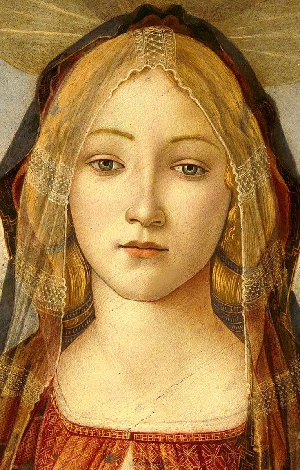
There are also many definitions of beauty, but I decided to go with this one that I found on Google: “True beauty is the state of being authentic and sincere in a way that extends love to yourself and others. It feels real, safe, alive, playful, flowing, authentic, life-giving. And this doesn't mean that beauty never has anything to do with our clothes or hair or bodies or faces”.
Photo: Botticelli's ideal model. Her name was Simonetta Vespucci. Apparently he was entrapped by her beauty. She was the epitome of renaissance beauty and her image keeps on appearing in Botticelli's paintings
The first person to use the phrase “beauty is in the eye of the beholder” was Margaret Wolfe Hungerford, who included the phrase in her book 'Molly Bawn' (1878). It is another way of saying that beauty is subjective. I hope that you will agree with me that it’s much more complex than just being in “the eye of the beholder”.
Classical Beauty
John Keats (1795-1821)
Keats was an English Romantic poet. He was one of the main figures of Romantic poetry, along with Wordsworth, Byron and Shelley. His origins were humble. His father, an ostler (managed horses) in East London, died when Keats was eight years old, and his mother died when he was 14 from Tuberculosis.
He was first apprenticed to a local surgeon and then entered Guys Hospital as a medical student and dresser. He received his apothecary’s licence in 1816, but his time was taken up more and more by his writing. His first poem was published later that year in the “Examiner Magazine”. His poetic career was very short due to his untimely death from Tuberculosis at 24.
Extract from Endymion Book 1: John Keats

A thing of beauty is a joy for ever:
Its loveliness increases; it will never
Pass into nothingness; but still will keep
A bower quiet for us, and a sleep
Full of sweet dreams, and health, and quiet breathing.
Therefore, on every morrow, are we wreathing
A flowery band to bind us to the earth,
Spite of despondence, of the inhuman dearth
Of noble natures, of the gloomy days,
Of all the unhealthy and o'er-darkened ways
Made for our searching: yes, in spite of all,
Some shape of beauty moves away the pall
From our dark spirits. Such the sun, the moon,
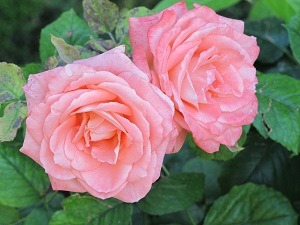
Trees old and young, sprouting a shady boon
For simple sheep; and such are daffodils
With the green world they live in; and clear rills
That for themselves a cooling covert make
'Gainst the hot season; the mid forest brake,
Rich with a sprinkling of fair musk-rose blooms:
And such too is the grandeur of the dooms
We have imagined for the mighty dead;
All lovely tales that we have heard or read:
An endless fountain of immortal drink,
Pouring unto us from the heaven's brink.
This extract comes from the first verse of his book. Endymion and it’s is the first line ‘A Thing of Beauty is a Joy Forever’, that has been immortalised ever since. He tells us that without beautiful things, the world is a grim, dark, despondent place and full of misery. It is beauty, ultimately, that makes the world go round. ‘Some shape of beauty’, Keats writes, ‘moves away the pall’.
The “Thing of Beauty is a Joy Forever” is based on the tale of the shepherd Endymion, whose beauty was of such joy to the goddess Selene that she asked Zeus to make him immortal so that she can visit him every night.
Listen to Tom O’Bedlam read Endymion: “A Thing of Beauty…”
Inner Beauty
Emily Dickinson (1830-1886)
Dickinson was born in Amherst, Massachusetts, into a prominent family with strong ties to its community. After studying at the Amherst Academy for seven years in her youth, she briefly attended the Mount Holyoke Female Seminary before returning to her family's house in Amherst.
Evidence suggests that Dickinson. lived much of her life in isolation. Considered an eccentric, she was known for her reluctance to greet guests or, later in life, to even leave her bedroom. Dickinson never married, and most friendships between her and others depended entirely upon correspondence
I died for beauty, but was scarce 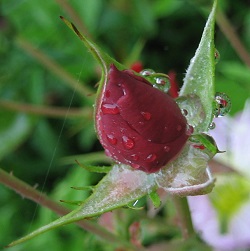
I died for beauty, but was scarce
Adjusted in the tomb,
When one who died for truth was lain
In an adjoining room.
He questioned softly why I failed?
“For beauty,” I replied.
“And I for truth,—the two are one;
We brethren are,” he said.
And so, as kinsmen met a night,
We talked between the rooms,
Until the moss had reached our lips,
And covered up our names.
This is one of Emily Dickinson’s well-known poems. This poem is loosely based on John Keats’ “Ode on a Grecian Urn” where Keats states “Beauty is Truth, Truth is Beauty”. She is referring to inner beauty in this poem. The speaker is dead, and she tells us that she died for that beauty. A man who died for truth is then laid to rest next to her. Dickinson states that both inner beauty and truth are rare and how we sometimes sacrifice ourselves and our lives to keep our morality. Being fake is easy but being true to ourselves and to those around us is difficult, as is being a kind, gentle, and overall good human being. Truth and morality are nearly the same and are “best friends”.
Listen to the poem
Beauty and Race
Margaret Burroughs (1915-2010)
Also known as Margaret Taylor Burroughs, was an American visual artist, writer, poet, educator, and arts organizer. She co-founded the Ebony Museum of Chicago, now the DuSable Museum of African American History. An active member of the African-American community, she also helped to establish the South Side Community Art Center, whose opening on May 1, 1941 was dedicated by the First Lady of the United States Eleanor Roosevelt. A long-time educator, she spent most of her career at DuSable High School. Taylor-Burroughs was a prolific writer, with her efforts directed toward the exploration of the Black experience and to children, especially to their appreciation of their cultural identity and to their introduction and growing awareness of art. She is also credited with the founding of Chicago's Lake Meadows Art Fair in the early 1950s.
The Beauty of Black
When we look at ourselves
We see ourselves through eyes
Which have been schooled
To see comely only the opaque,
Comely to us skin that is fair,
Comely to us eyes that are light,
Comely to us hair that is straight,
Comely to us lips that are thin,
Our gods and goddesses
Glow in opalescent whiteness
And daily we worship at this shrine.
Ugly to us our satin black skin,
Ugly to us our fulsome lips,
Ugly to us our midnight eyes,
Ugly to us our crisping hair
Thus we have rejected our image.
But this is not as it should be
We black people must be born again.
Know that the black people like other races
Have their own distinct beauty,
Know that the Stygian night too is beautiful.
This is a powerful poem about our views of beauty which are defined by the prejudices and perceptions around us. Our ideals of beauty are programmed by our past, our upbringing and the influences coming at us from the consumerist world around us. That Stygian (dark) Night is also beautiful.
Listen to the Poem
Take a look at this powerful spoken word recitation "
A Brown Girl's Guide To Beauty" by Aranya Johar.
Beauty in Nature
Arti Chopra
Born in Jammu in the beautiful state of Jammu and Kashmir, she attended college education in Delhi and became a primary teacher. She started writing poetry as a hobby while posted to different places in India, but took it up more seriously, when she had more time on her hands while posted to Turkey.
The scenic beauty of Kashmir and Turkey have been her underlying motivation to write about the beauties of nature. Nothing moves her more than nature in all its glory and her poetry seeks to crystallize her admiration in words.
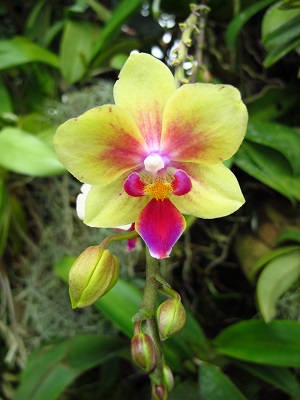
Beauty in Nature
There’s a poem in every flower,
a sonnet in every tree,
a tale in every lifetime
its just for you to see…
there’s a lyric in every brook
as it rushes over rocks,
there’s an ode in every nuance,
as loves wonder unlocks,
there’s rhythm in every sound,
every beating of a heart,
there’s poetry in every union
and every couple who are apart
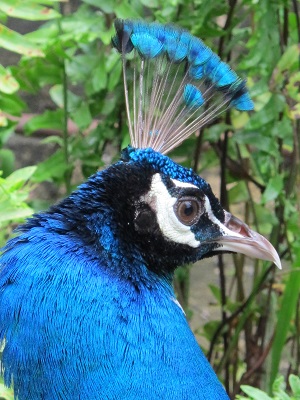
and just as there is wonder
in every new life created
there is sadness and regret,
for the unsaid and unfeted
just listen for the music
that your ears cannot hear,
just strain yourself for the melody
that’s so far and yet so near
the wonder of the creator,
the magic of the divine
is there to feel, for all of us,
to soon be yours and mine
Fukuda Chiyo-ni (1703-1775)
A Japanese poet of the Edo period, Fukuda Chiyo-ni is widely regarded as one of the greatest poets of haiku. Some of Chiyo's best works include ‘The Morning Glory’, ‘Putting up my hair’, and ‘Again the women’.
One of his Haiku’s to finish
spring rain———
all things on earth
become beautiful